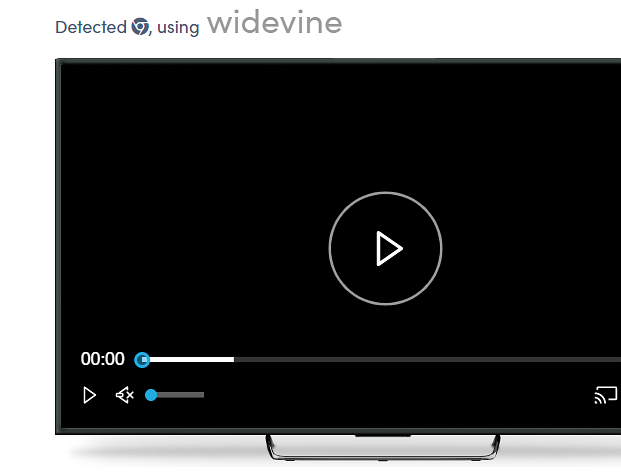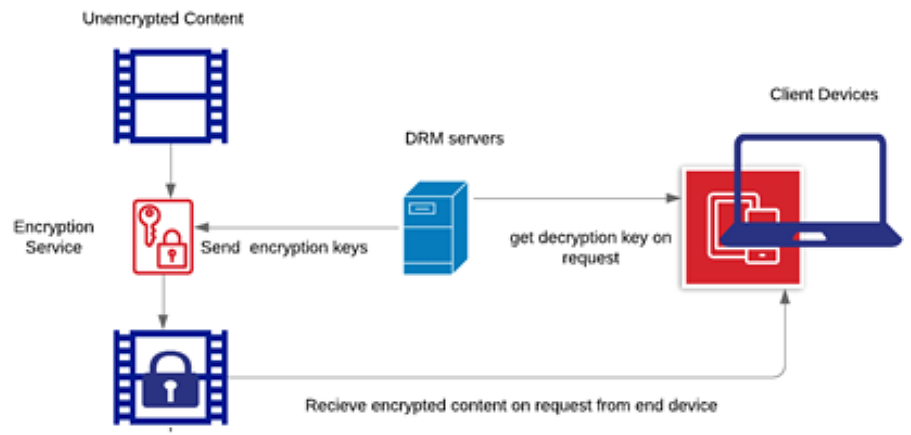Consumption of video content is all-time high today. On average a person consumes 84 minutes of video every single day.
Explosive video streaming comes with high risks of cyber security threats, and it’s important to provide video streaming security. Businesses, marketers, and content owners are concerned about rising security reasons.
In this article today, we will guide you through how to achieve secure video streaming in 2022.
Let’s get started!
AES Video Encryption
Token protection Timestamp Anti-hotlinking Using MD5
Some of the benefits:
- Users won’t be able to share the content link simply because each play URL generated a special hash which includes the unique IP address of the user.
- Only approved users who purchased content can enjoy access.
Disadvantages:
- Hard to implement, requires developer’s time.
- Content is not protected by screen recording.
HTTPS(HTTP+SSL)
Hypertext Transfer Protocol Secure certificate is an encryption-based internet security protocol that provides an extra layer to the browser and website.
With HTTPS(HTTP+SSL) you can save your live streaming from middleman attacks with its digital certificates and encryption keys. An HTTPS is more viable for businesses that have open networks and publicly-served networks.
The goal of the HTTPS is to create safeguard encryption between the services, and the viewer. It wraps up all the communication with added protection from cyber-attacks.
HTTPS is much needed during the times when most businesses rely on, video calls, conferences, and online meetings for day-to-day business purposes.
You can rely on CDNvideo which provides HTTPS certificate deployment. You can:
- Upload your own SSL certificate;
- Generate SSL certificate.
GEO Blocking
In Geo-blocking, you can block some geographies that you might think will hurt the security of the data.
Usually businesses prefer to have geo-restricting distribution, because of rights bought only for specific countries/regions.
When you try to access live streaming, you might find something like the image below; and it’s due to geo-blocking.

The page above can not be accessed due to network censorship. CDNvideo can help you make this content available in your country by creating special links for geo-restrictions.
With geo-blocking, you can choose whether or not to allow access to your content in a specific locality. The feature is called Geo-filtering.
Based on the internet protocol of the user, geo-filtering blocks from streaming your content. The two main reasons for geo-blocking are:
- Internet censorship;
- Licensing agreements;
- Filtering Content;
- Copyright.
The content can be accessed or restricted in the countries listed based on the license agreement. As soon as the user browses certain live streaming, the device gives away its location. Based on the location, the content can be accessed or restricted as per the license agreement.
Some of the cases where you may find geo-blocking are:
- Sports case; if you are live streaming an event, you can’t do it in every participating country because your platform might not be famous in each country and you will have to sign an agreement with just one country and block it from all others;
- Media and entertainment; the same goes for media and entertainment purposes. Some countries might not allow the certain kind of content you would like to live stream.
IP restrictions
As its name suggests, you can restrict certain IPs from accessing the video streaming except for the ones that have a legitimate right to access the content thus securing your overall video content. This method is similar to geoblocking except for the fact that you just block certain IPs instead of the overall geographies.
You can protect your content to be accessed by unauthorized IPs. It is a great option for corporate users who just dont want the video to be accessed by certain individuals.
You can choose among the following three IP restriction options:
- Allowed All;
- Allowed Only;
- Allow All Except.
Once you choose the ‘Allowed Only’ option, you can enter several IP addresses to which you want to give access to the content.
This method is not 100% bulletproof, yet it provides an extra layer of security to online video streaming. This method is crucial because certain places are at high risk of piracy.
Referrer Restrictions
It can provide a security layer to your video streaming by white-listening a certain amount of websites and their affiliate partners. This method would be too restrictive if you want to stream your content to a wider audience.
In referral restrictions, digital security tokens monitor your server to identify if the content has been embedded on an unauthorized site. And, if it does it immediately blocks the playback. So, wherever a user tries to embedded video on another website, it will fail to stream it.
DRM – A Popular Video Streaming Security Trend
Today marketers, consumers, content creators, and distributors are concerned about the rising data security issues.
Different Formats of DRM?
There are a number of DRM solution providers in the market today, with their own distinct features and capabilities. Here are three of the most popular ones that businesses can explore:
- Widevine: A DRM solution with content protection, a fully-featured HTML5 video player with adaptive streaming and standardized formats that allow users to play anywhere after encryption.
- PlayReady: A set of DRM technologies from Microsoft that has features such as the ability to control expiration date, resolution, type of screen, and other aspects of video playback.
- Fairplay: A DRM system from Apple that lets you securely distribute streaming digital media using the HLS (HTTP Live Streaming) protocol. It is natively supported on iOS, tvOS, and macOS.
A DRM controls the security, and interoperability of the data. Digital Rights Management (DRM) technology protects digital content from piracy. It also determines how the users can access and use digital content in its;

Benefits of DRM
DRM is a requirement for some OTT. The following are the key benefits of DRM:
• It distributes the encryption and decryption keys.
• DRM manages backend licensing servers for policy, offline playback controls, etc.
• Users cannot screen-record the content. If the user tried to record or take a screenshot of the screen he would get a black screen.
• DRM provides the highest quality of content licensing.
• You will get gain best-in-class low latency, high availability, and robust redundancy.
• This method tracks and manages video streaming security trends.
• It also,
◦ Secures key storage and distribution models
◦ Helps you with easy integration with the application
◦ Helps you manage multip-DRM
◦ Provides you flexible licensing model
◦ Provides you with online updates

Also can we please explain how much it costs?
Here is a rundown of the DRM charges.
- Basic. $200. USD/Month including 10 000 multi-DRM licenses;
- Need more DRM licenses? Contact us to get a unique quote.
How CDNvideo/CDNetworks Can Help to Secure Your Video Content
Our CDNvideo|CDNeworks help you secure your video content streaming by providing security protocols. We incorporate the above mention methods to assist our clients and businesses to achieve secure video streaming in 2022.



